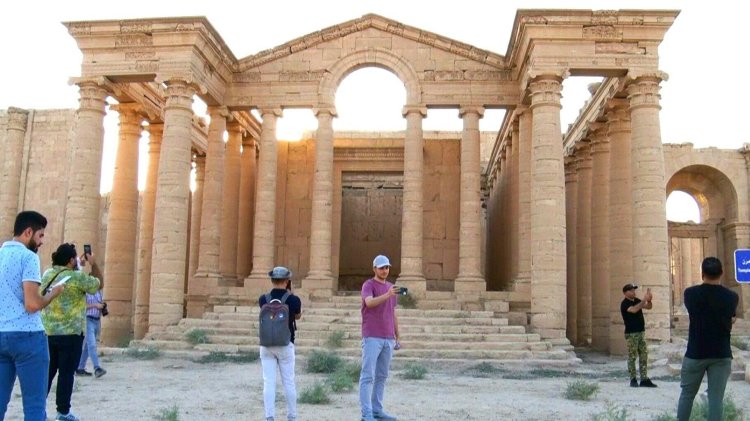Iraq ancient ruins open up to tourism after IS atrocities

Designated an endangered world heritage site by UNESCO, Hatra dates back to the 2nd and 3rd centuries BC.
It is a two-hour drive from Mosul.
Some 40 visitors, most of them Iraqis, were allowed to walk around the more than 2,000-year-old archaeological site in the golden hour of twilight.
The tourists took selfies in front of impressive colonnades and inspected the reliefs vandalised by IS jihadists.
An important religious and trading centre under the Parthian empire, Hatra had imposing fortifications and magnificent temples, blending Greek and Roman architectural styles with oriental decorative elements.
In 2015, IS released a video showing its militants destroying a series of reliefs, firing at them and hacking away at a statue with a pickaxe.
In February, the authorities unveiled three restorations at the site: a Roman-style sculpture of a life-size figure and reliefs on the side of the great temple.
After its rise to power in 2014 and the conquest of swathes of Iraq and Syria, IS faced counter offensives in both countries. Iraqi forces finally claimed victory in late 2017.
As Iraq gradually opens up to foreign tourism, dozens of visitors -- particularly from the West -- are now exploring the country, with some even venturing into Mosul.
The Hatra group are pioneers, visiting at a time when the US, British and other governments are warning their citizens against travel to Iraq, citing the risks of terrorism, kidnapping, armed conflict and civil unrest.















